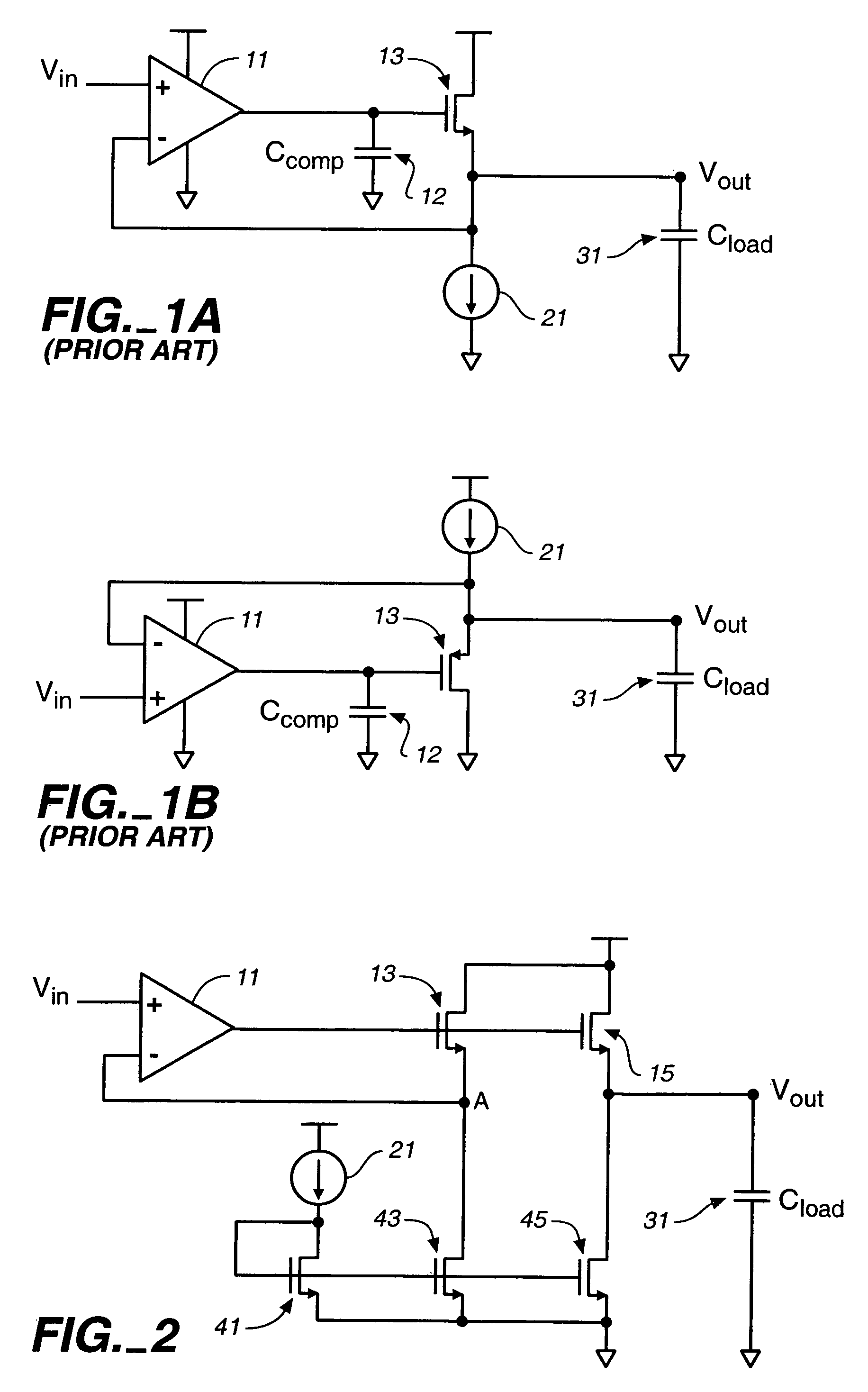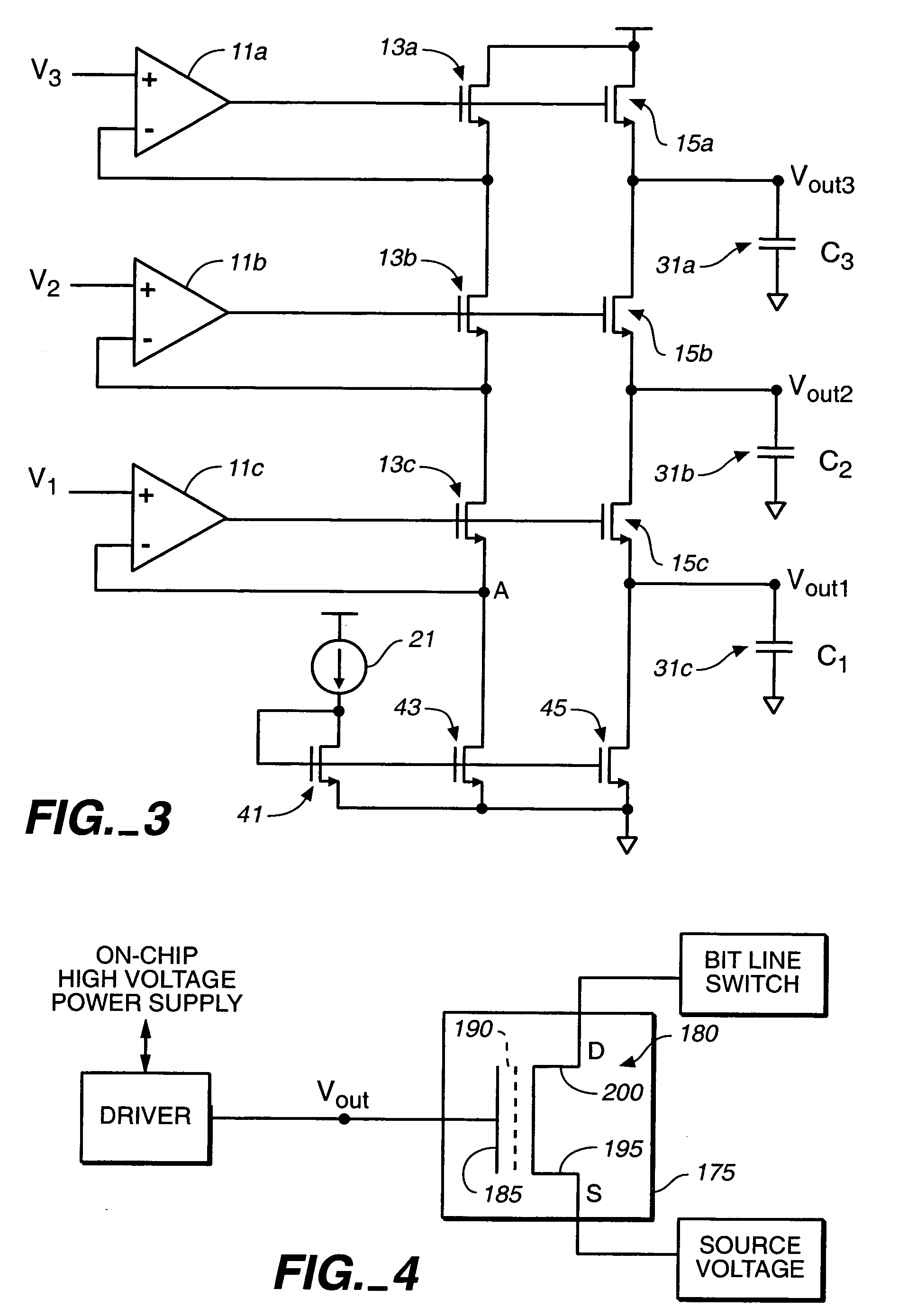Voltage buffer for capacitive loads
a voltage buffer and capacitive load technology, applied in the field of voltage buffers, can solve the problem that reference voltage cannot drive the load sufficiently, and achieve the effect of stabilizing the loop, reducing the quiescent current of the buffer, and improving the settling tim
- Summary
- Abstract
- Description
- Claims
- Application Information
AI Technical Summary
Benefits of technology
Problems solved by technology
Method used
Image
Examples
Embodiment Construction
[0016]A first exemplary embodiment of the present invention is shown in FIG. 2. As is described in the following, this provides a unity gain buffer able to drive analog voltages on large and potentially variable capacitive loads with small quiescent current and fast settling times. In particular, in the design of FIG. 2, although the reference voltage Vin still determines the level on the node Vout connected to the load Cload 31, this node has been isolated from the feedback loop to the differential gain stage 11. Although the design of FIG. 2 uses a variation of source follower output stage, this isolating of the load allows the feedback loop to be stabilized in the presence of large loads without having to add large compensation capacitors, such as Ccomp 12 in FIGS. 1a and 1b, to introduce a dominant pole in the loop.
[0017]FIG. 2 again shows a reference voltage Vin applied to a first input of differential gain stage or op-amp 11, whose output is connected to the control gate of a ...
PUM
 Login to View More
Login to View More Abstract
Description
Claims
Application Information
 Login to View More
Login to View More - R&D
- Intellectual Property
- Life Sciences
- Materials
- Tech Scout
- Unparalleled Data Quality
- Higher Quality Content
- 60% Fewer Hallucinations
Browse by: Latest US Patents, China's latest patents, Technical Efficacy Thesaurus, Application Domain, Technology Topic, Popular Technical Reports.
© 2025 PatSnap. All rights reserved.Legal|Privacy policy|Modern Slavery Act Transparency Statement|Sitemap|About US| Contact US: help@patsnap.com



